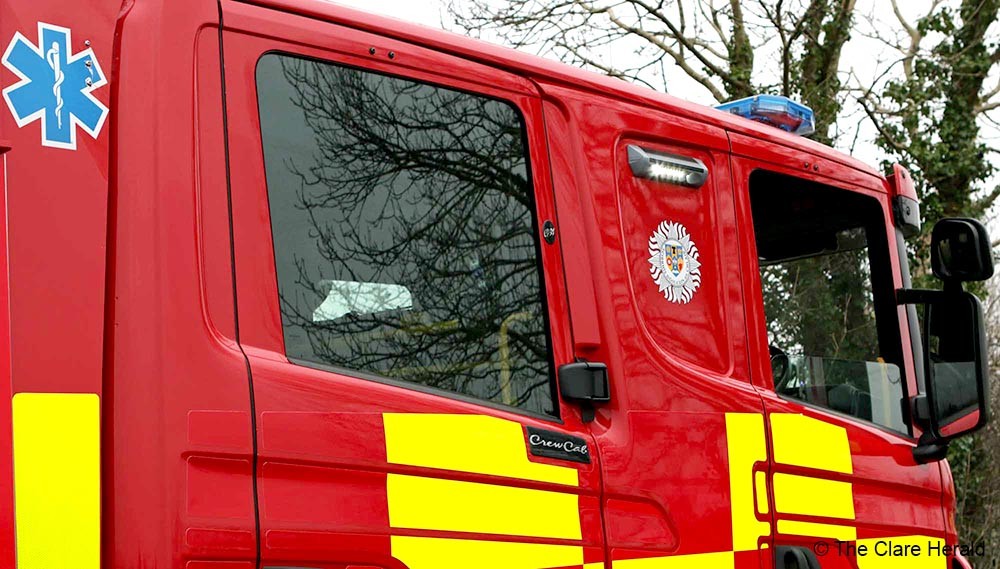
A man who collapsed in West Clare on Monday evening was left waiting for an ambulance for over an hour and almost two hours before he was transported to hospital.
This latest serious incident in West Clare has prompted further calls for a review of the the National Ambulance Service’s resource deployment procedures which, it has been claimed, are flawed and unworkable.
At around 6.20pm on Monday, fire crews from Kilkee station were requested to respond to a medical emergency in Carrigaholt. It’s understood that there was no National Ambulance Service (NAS) resource available in Clare at the time so Clare County Fire and Rescue Service was requested to send first responders to the scene.
A number of calls were made by Gardaí and the fire service requesting an ambulance to attend the scene or inquiring what time an ambulance would arrive.
At around 7.30pm a rapid response advanced paramedic unit arrived at the scene while it was another 10 minutes before an ambulance arrived. It’s believed that crews were tied up with other calls at the time of the Carrigaholt incident and that no other personnel were available.
While waiting for the ambulance, fire service first responders cared for the ill man who was eventually transported from the scene to hospital shortly after 8.00pm. The 100 kilometre road journey by road took a further 90 minutes to complete so it was well over three hours between the first emergency call being made and the time the mad arrived at University Hospital Limerick.
West Clare County Councillors Cillian Murphy and Ian Lynch have raised the issue of ambulance availability in West Clare with the HSE on numerous occasions while Independent Clare TD Michael McNamara also asked questions on the matter in the Dáil last October following another incident in Kilkee where a patient was left waiting for an ambulance.
NAS paramedics across the region have consistently said the county has regularly been left without any available ambulance as they are sent to other counties to respond to calls or are tied up at A&E departments.
Ambulances from Clare have in the past been sent to Connemara in West Galway, West Limerick, Tipperary and further afield often while no other ambulance was available to cover Clare.

One NAS paramedic said: “All we want to do is respond to calls and help our patients. It’s very frustrating being on a call in the far end of County Limerick, Tipperary, Galway or even Cork and hearing there’s serious crash or medical emergency on your own doorstep in Clare and knowing there’s no-one available in the county to respond to it. We are being send all over the place because the service isn’t adequately resourced.”
“We know of cases where ambulances have been sent from Kildare or even Dublin to calls in the mid-west and being stood down en-route when an ambulance becomes available. This is purely so NAS can say afterwards ‘but we sent a resource immediately’. It’s a disgrace,” another paramedic said.
The National Ambulance Service operates a system of ‘dynamic deployment’ where resources are dispatched based on the medical needs of a patient.
Councillors Murphy and Lynch believe however that the system does not work and that too often, people in West Clare are being left waiting for hours for an ambulance to become available and respond to assist them.
The National Ambulance Service has repeatedly stated: “The National Ambulance Service National Emergency Operations Centre (NEOC) utilises an Advanced Medical Priority Dispatch System (AMPDS) using international standards in triaging and prioritising emergency calls. NEOC dynamically deploys resources to areas where cover is required or to respond to incidents as they arise to ensure the nearest available resource responds to emergencies.”
“All 112/999 calls are clinically triaged based on the patient’s condition and the nature and location of other 112/999 calls in the area are understandably not apparent to callers when they call 112/999. The nearest available and most appropriate response is dispatched, with the most urgent calls prioritised.
The ambulance service operates on a national basis and mobilises responses to calls for assistance based on patient needs, ambulances may travel to various locations irrespective of their base as they are not confined to work in geographical areas. The current deployment model is designed around international best practice,” the HSE has repeatedly claimed.
